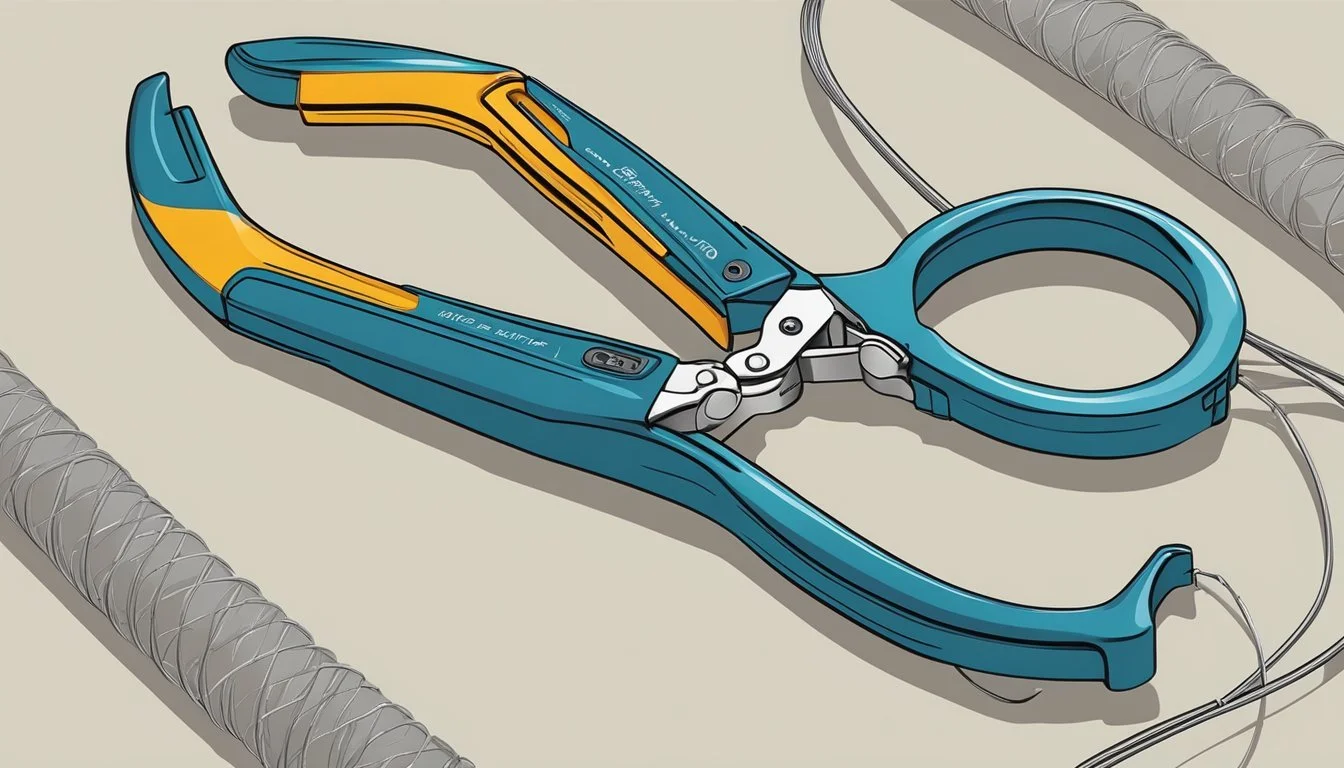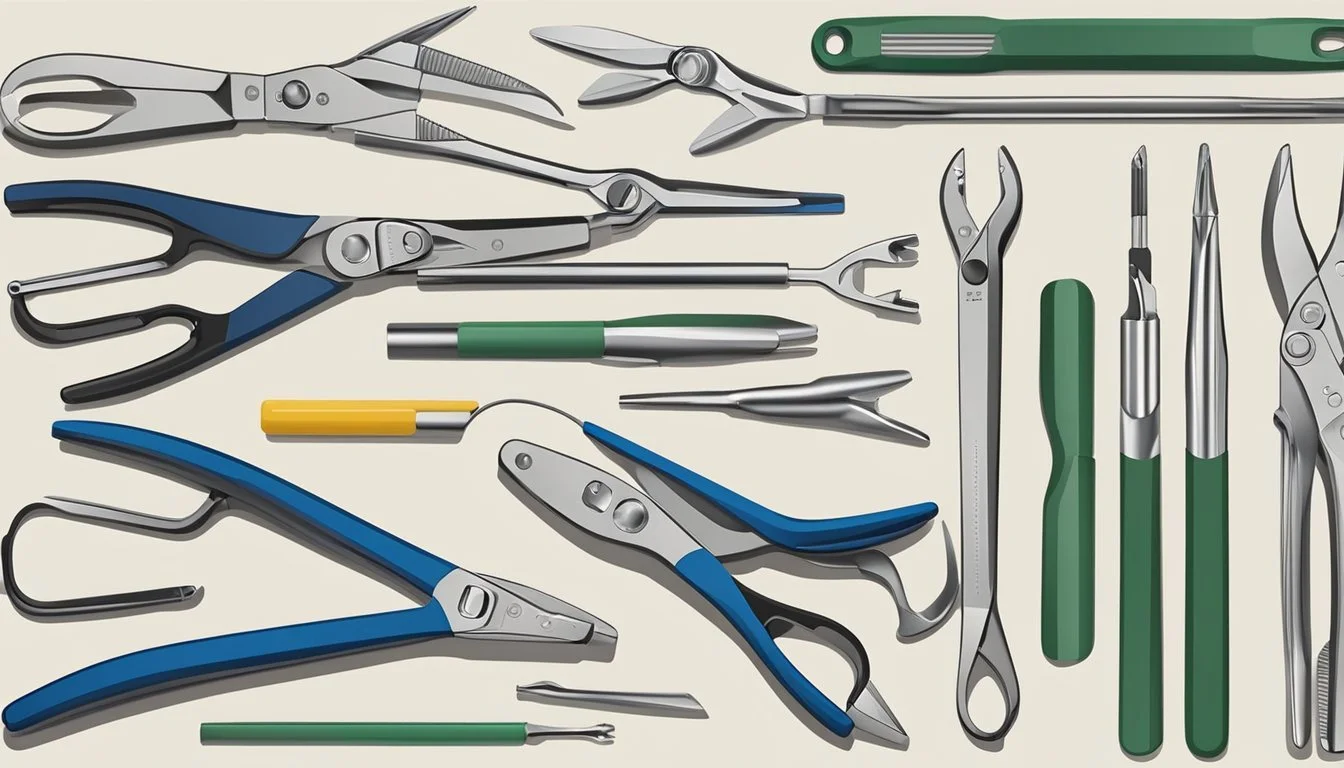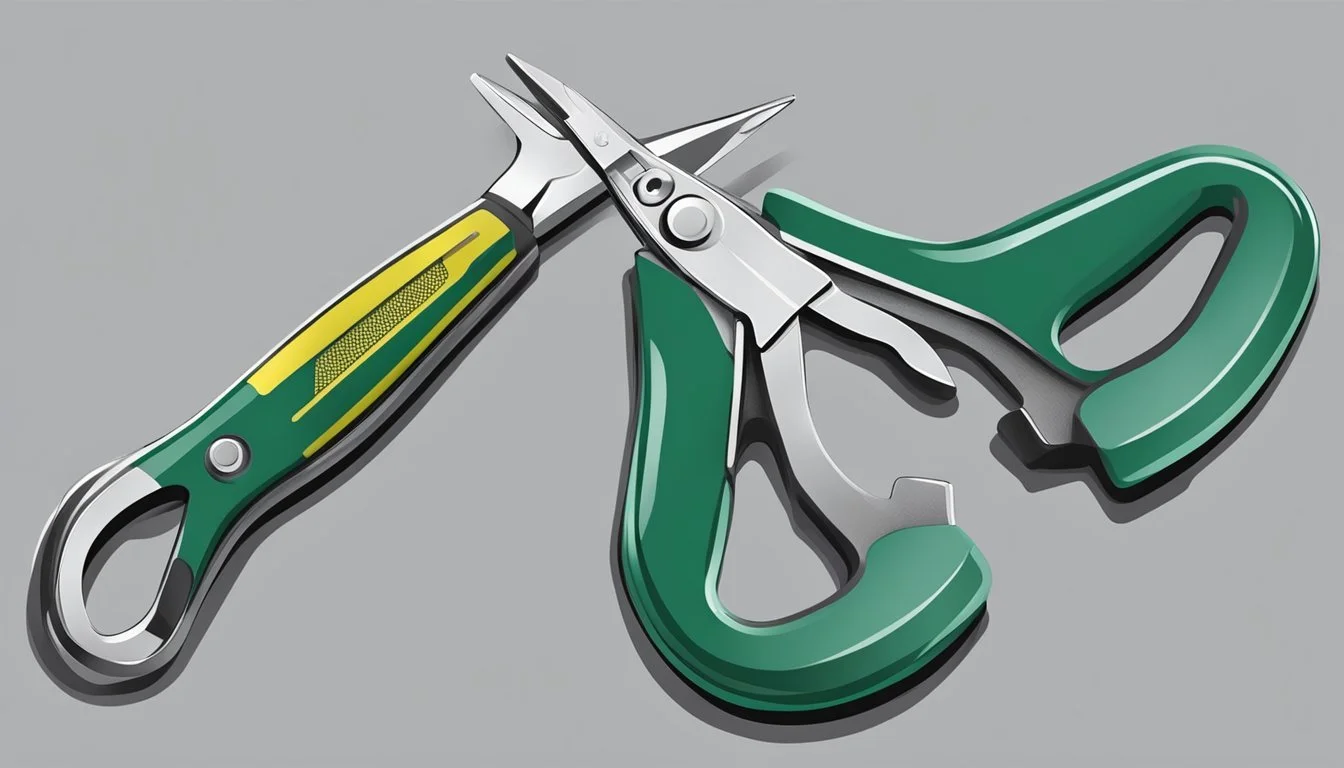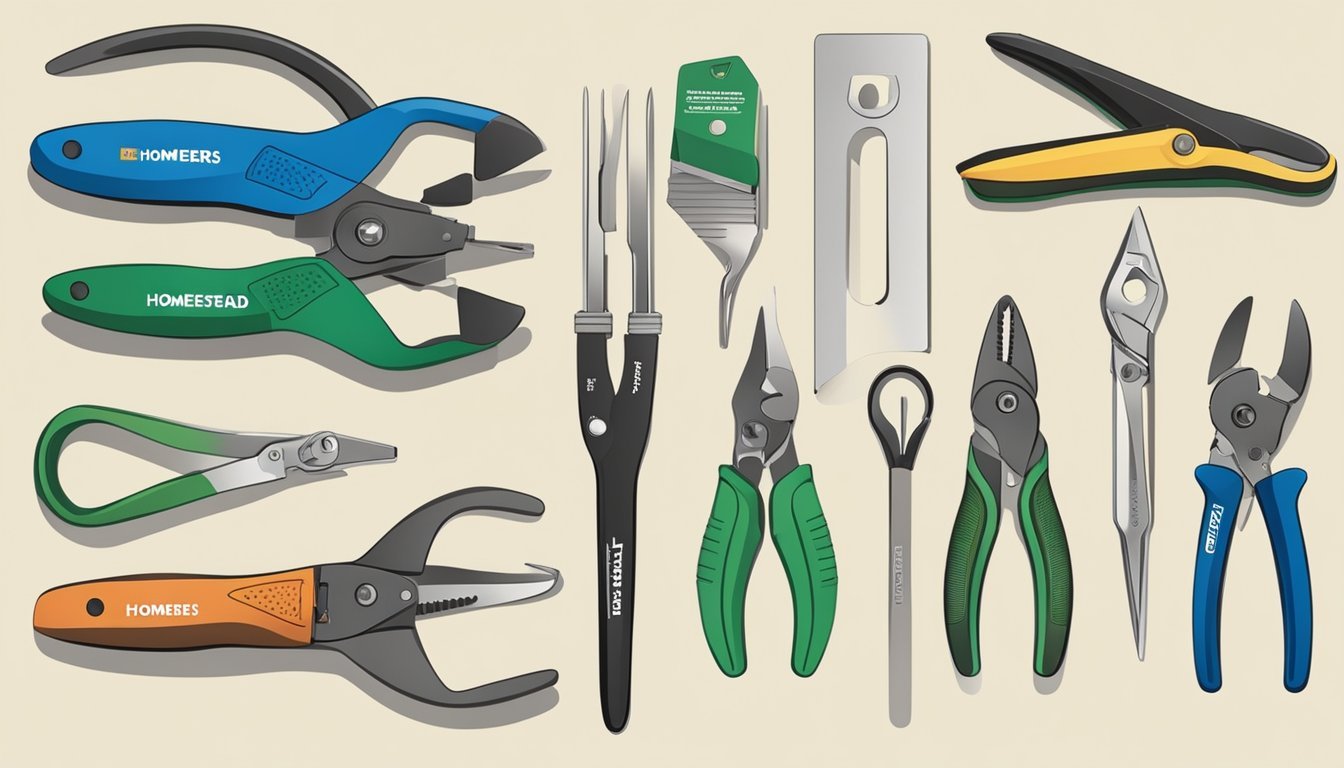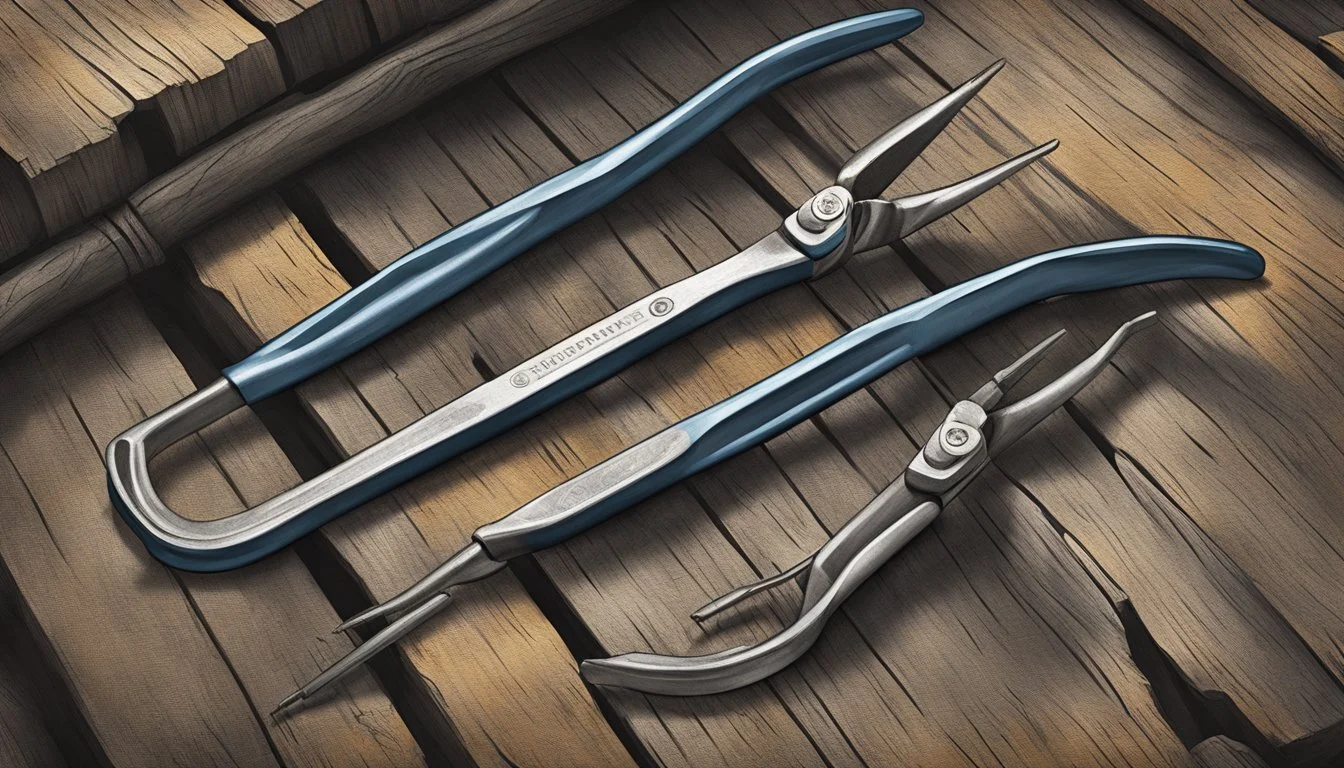The Best Pliers for Homesteaders
Essential Tools for Versatile Farm Repairs
For homesteaders, having the right tools can make all the difference in maintaining and improving their self-sufficient lifestyle. Among the plethora of tools that fill the sheds and workshops of these resilient individuals, pliers hold a particularly versatile role. They are not just tools; they are the extensions of a homesteader’s hands, enabling them to grip, twist, bend, and cut a variety of materials with precision and strength.
The quest for the best pliers is defined by the specific needs of homestead projects, which may range from wire fencing to plumbing repairs. Durable materials, such as drop-forged steel, ensure that the pliers can withstand the rigors of daily use, while ergonomic designs minimize fatigue, thereby extending not only the tool’s life but also the comfort of the user. Essential features, like a good grip and different jaw configurations, cater to a wide array of tasks, reinforcing the idea that the right plier for the job is a homesteader's silent ally.
Pliers come in assorted styles, each with its own unique benefits, but the common factor for the best ones is their reliability in handling the tough and often unexpected challenges of homestead living. Whether it's slip joint pliers for general tasks, high leverage ones for electrical work, or groove-lock pliers for better adjustability and grip, the top selections share the traits of durability, comfort, and precision, ensuring they're not just adequate but exemplary for the varied demands of homesteading.
Understanding the Basics of Pliers
Pliers are a fundamental hand tool in any homesteader’s kit, valued for their simplicity and utility. Essentially, pliers consist of two metal pieces, each functioning as both handle and jaw, which pivot around a fulcrum to increase force at the jaws. The two primary parts, the jaws and the handles, work together to grasp, bend, or cut materials, with the leverage provided by the handles augmenting the force applied by the user's hand.
Jaws: The business end of the pliers, varying in shape and serration to align with specific tasks. The design of the jaws determines the grip and the type of work—be it holding, bending, or cutting—that the pliers can effectively perform.
Handles: Longer handles can exert greater force, thanks to increased leverage. They are typically coated with insulating materials like rubber or plastic to provide comfort, reduce hand fatigue, and sometimes protect against electrical shock.
Jaws: Gripping and manipulating materials
Handles: Providing leverage and comfort
Pivot Point: Enabling the jaws to open and close
Quality is paramount when selecting pliers. High-grade materials, such as drop-forged steel, contribute to the tool's durability and effectiveness. A well-designed pivot point is crucial; it ensures smooth operation and maximizes the transfer of force from handles to jaws. Moreover, a reliable grip is guaranteed through appropriately textured jaw surfaces, ensuring that materials are held securely without slippage.
While many pliers share these basic features, specific variants are tailored to unique applications. The optimal pair for a homesteader hinges on the tasks they undertake most frequently, be it wire manipulation, cutting, or gripping metal or plastic materials.
Types of Pliers Every Homesteader Should Know
Pliers are a staple in any homesteader's toolkit, each type designed to fulfill specific tasks with ease and precision. From manipulating thin wires to gripping bulky materials, the right set of pliers can greatly improve efficiency and safety.
Slip-Joint Pliers
Slip-joint pliers are a versatile choice, equipped with an adjustable pivot point to accommodate two different sizes of grips. They are perfect for gripping, bending, and tightening with a convenient shifting mechanism to handle a range of materials.
Needle-Nose Pliers
With slender, tapered jaws, needle-nose pliers (also known as long nose pliers) are ideal for reaching into tight spaces. They are excellent for precision work, including bending small wires or holding small components.
Combination Pliers
Combination pliers serve a dual purpose: featuring gripping jaws at the front and a cutting edge near the base. They can both hold items firmly and snip through wires, making them a functional tool for various tasks.
Locking Pliers
Locking pliers, commonly referred to by the brand name Vise-Grips, are adjustable pliers that can lock onto workpieces, providing a hands-free grip. They are essential for tasks that require sustained pressure or a stable hold.
Diagonal Pliers
Diagonal pliers are primarily cutting pliers, characterized by their angled cutting edges designed for snipping wire. They apply significant leverage to cut through materials such as copper, brass, iron, steel, and aluminum.
Water Pump Pliers
Also known as tongue-and-groove pliers, water pump pliers are identifiable by their slip-joint design and serrated jaws. They are best suited for gripping pipes and other large, round objects and come in various sizes to meet different needs.
Wire Strippers
Wire strippers are specialized tools used to strip the insulating coating off electric wires. They have notches of different sizes to precisely strip wire gauges without damaging the metal underneath.
Selecting the Right Pliers for Different Tasks
Choosing the proper pliers ensures efficiency and safety in various tasks. The right tool can make a significant difference for electricians, plumbers, mechanics, and DIY enthusiasts alike, influencing material handling, whether it be wires, pipes, or bolts.
Electrical Work
For electrical tasks, high-leverage pliers and diagonal cutting pliers prove indispensable. Electricians require tools that can grip and manipulate wires with precision. Needle-nose pliers are ideal for bending wires for installations, while diagonal cutting pliers are specifically designed for cutting through copper, aluminum, and other conductive materials. Insulated handles are a must for safety, offering protection against electrical shock.
Plumbing
Plumbers typically reach for slip-joint pliers and tongue-and-groove pliers. These pliers accommodate the size variation in pipes and fittings. Tongue-and-groove pliers are especially useful for gripping and turning during installation or removal, while their adjustable jaws can handle everything from small compression fittings to larger pipes.
Mechanical Work
In mechanical work, precision and grip strength are essential. Locking pliers or vise grips provide a firm hold on bolts and other components, being invaluable during removal or when regular wrenches fail. Additionally, mechanics benefit from adjustable pliers that can conform to a variety of shapes and sizes, facilitating work on diverse machinery and vehicles.
DIY Projects and Building Maintenance
DIY and maintenance tasks call for versatile tools. Slip-joint pliers are a general-use tool capable of gripping and bending multiple materials. For more heavy-duty DIY projects, especially those involving cutting wires or robust materials, linesman pliers or heavy-duty diagonal pliers are the tools of choice. They deliver the necessary force and sharpness for efficient cutting, ensuring that the DIYer or maintenance professional completes the job with precision and ease.
Key Features to Consider When Buying Pliers
When homesteaders select pliers, they should consider both functionality and durability to manage varied tasks efficiently.
Material: The construction material is critical for longevity and performance. High-carbon steel or chrome vanadium steel is recommended for exceptional strength. For robust applications, look for heat-treated or alloy steel options which provide extra resilience.
Handle and Grip: The handle impacts comfort and control. Insulation on handles not only ensures a firm grip but also offers protection against electrical shock, making them suitable for electrical work.
Jaws and Teeth: Quality pliers feature serrated jaws with sharp, durable teeth, optimizing grip on materials. Heavy-duty jaws withstand frequent use and the added pressure needed for tougher jobs.
Cutter: Integrated cutters should have the capability to shear through wire easily. Cutters made from hardened steel maintain sharpness over time, which is essential for clean, efficient cuts.
Fulcrum and Leverage: The position of the fulcrum (pivot point) influences the required effort. Pliers with a high-leverage design amplify force, reducing hand fatigue.
Tip: Different tasks may require different tip types. For example, needle-nose pliers are best for precision work in tight spaces.
Special Features: Details like a serrated jaw or a plastic coating on the handles can both enhance performance and increase user comfort.
Understanding Plier Quality and Durability
Quality and durability are pivotal when selecting pliers for homestead tasks. High-quality pliers are crafted from robust materials like steel. They are often heat-treated to enhance hardness and longevity, ensuring a longer lifetime and better value for the user. Tool steel and vanadium are common materials used for their strength and durability.
Heavy-duty pliers designed for rigorous use tend to feature induction-hardened cutting edges. This process increases the wear resistance, allowing them to maintain sharpness and precision over many uses. The durability of a plier directly influences its performance in gripping and manipulating materials without deforming.
Steel: High strength, suitable for demanding tasks
Vanadium: Enhanced toughness, resists abrasion
Induction Hardened: Long-lasting sharpness, better efficiency
Reliable brands produce pliers that often exceed standard specifications for durability. Homesteaders can find these tools at various retailers, including Amazon, where a wide range of options allows for careful comparison of quality and price.
In summary, assessing the craftsmanship, material composition, and treatment of pliers will guide homesteaders in selecting a tool that withstands the test of time and heavy usage, epitomizing the investment in quality for all-round utility on a homestead.
Brands and Price Ranges for the Best Pliers
When selecting pliers for homestead tasks, it's important to consider the balance between quality and affordability. Recognizable brands offer tools in various price brackets to address the diverse needs and budgets of users.
Budget-Friendly Options
For the budget-conscious homesteader, brands like WORKPRO and Irwin provide cost-effective solutions. Prices for basic sets start at:
WORKPRO: A 7-piece pliers set can be found for around $20-$30 on Amazon.
Irwin: Individual locking pliers by Irwin, which are a staple in many toolboxes, typically range from $10-$25 per tool.
These options are excellent for everyday tasks and beginner users who require reliability without a large investment.
Mid-Range Tools
Moving to the mid-range, Klein Tools offers American-made quality that is favored by many professional tradesmen, with prices generally falling between:
Klein 6-piece Apprentice Tool Set: Approximately $60-$100.
These sets often include essential tools such as lineman's pliers, diagonal pliers, and long-nose pliers, which cover a wide range of tasks.
High-End Professional Sets
For the serious user, high-end brands like Knipex provide top-tier performance with prices reflecting the professional quality:
Knipex Pliers Set: Professional sets can start at $100 and up, with a variety of sizes and styles for specialized tasks.
Knipex is recognized for its durable construction and innovative designs, such as the Cobra Series, which cater to demanding environments and precise work. These pliers are investments for users seeking tools that will deliver consistently under rigorous use.
Finding the Best Deals on Plier Sets
Homesteaders seeking quality plier sets for their toolkit need to consider both price and value. A smart approach involves checking for discounts and customer reviews on popular online platforms like Amazon where various deals are often available.
Stay Within Budget: For the cost-conscious, identifying the best deal involves comparing prices across different sets. Pricier options do not always equate to better quality. High customer ratings can often lead one to value-for-money picks.
Assess the Sizes: Plier sets come in a range of sizes, tailor-made for specific tasks. Homesteaders should look for sets with a versatile selection of pliers such as:
Slip-joint pliers
Needle-nose pliers
Lineman’s pliers
Price Comparison:
Irwin VISE-GRIP 8-Piece:
Price Range: $20 - $40
Sizes Included: Various up to 10"
Purchase Location: Amazon
Klein 8-inch slip-joint pliers:
Price Range: $16 - $25
Sizes Included: 6", 8", 10"
Purchase Location: Retailers
SK Tools Model SKT-7208:
Price Range: Around $22
Sizes Included: 8" Combination
Purchase Location: Tool Suppliers
Finding Deals: Homesteaders should also look for seasonal sales or coupon codes for additional savings. Sometimes, buying a set as opposed to individual pliers can offer a better deal, especially when it comes with a case for convenient storage.
Final Thoughts: Investing the time to research and compare can lead one to find the right balance of quality, variety, and price, ensuring they have the right tools for their homesteading tasks without overspending.
Safety Tips for Using Pliers
Grip Strength and Force Considerations: When using pliers, one must ensure that they apply adequate grip strength to maintain control over the object they are manipulating. However, users should avoid exerting excessive force which could damage the pliers or the material being worked on. Locking pliers should be adjusted to secure the workpiece snugly, without requiring extreme hand strength to maintain the grip.
Safety Precautions:
Pliers should never be exposed to high heat as it might compromise their structural integrity.
It's crucial to avoid using pliers on live wires to prevent electric shock.
The temptation to use pliers as a hammer should be resisted; this can cause significant damage to the tool.
Proper Usage to Avoid Injury:
Ensure the pliers' jaws are parallel for a firm grip with minimal effort.
Select the correct size for the job to avoid the need for two-handed operation, which could lead to accidents.
Keep pliers clean to ensure the best performance and longevity of the tool.
Avoiding Pinching: Users should always select pliers or wire cutters that have a grip span adequate to prevent fingers from being pinched when the tool is closed (ideally between 6cm and 9cm).
Technique for Cutting Wires:
Cut wires perpendicularly, without rocking or bending against the cutting edges.
Utilize the correct pliers' notch to match the wire gauge for efficient cutting with minimal force.
By understanding the limitations of pliers and practicing these safety guidelines, users can perform tasks effectively while minimizing the risk of injury or tool damage.
Maintenance and Care for Longevity
A homesteader's toolkit is incomplete without quality pliers, but their longevity significantly hinges on proper maintenance. Durability is directly correlated with routine upkeep. They should approach plier care systematically, ensuring each pair functions reliably over its lifetime.
Firstly, regular cleaning is vital. After each use, wiping the pliers with a clean rag removes debris and moisture that could corrode the steel. If any sticky residue is present, a mild cleaning solution can be applied, followed by a thorough dry.
To maintain the handle and ensure a safe grip, users should check for any signs of wear or damage. If the handles are dipped in plastic or rubber for insulation or comfort, any compromise to this coating should prompt immediate action, either through repair or replacement.
For the steel components, a light application of machine oil protects against rust and keeps the plier's pivot points smoothly operational. This is especially pertinent after the tool has been exposed to moisture:
Wipe down with a rag
Inspect and apply cleaning solution if needed
Dry thoroughly
Inspect handles for wear
Lubricate pivot points with machine oil
Moreover, they should store their pliers in a dry, covered place to fend off environmental elements that could degrade the metal or the handle material, thus assuring the quality and durability of their tools are preserved, facilitating their work on the homestead for years to come.
Accessorizing Your Plier Set
When investing in a plier set, one should consider the various accessories that could enhance the utility and longevity of their pliers. A primary focus should be on the handles. They can significantly impact the level of comfort during use. For those who spend numerous hours working with pliers, ergonomic handles with specially-designed grips are essential to prevent fatigue. Some handles come with a non-slip surface or a padded grip, providing a firmer hold and better control.
Ergonomic Handles: Improved comfort and reduced hand fatigue
Non-slip Surfaces: Secure grip even with oily or wet hands
Padded Grips: Additional cushioning for comfort during prolonged use
The teeth of pliers are another aspect to pay attention to. They determine how well a plier can grip materials. To ensure a reliable performance, look for pliers with hardened teeth that can grip and bend materials without slipping. It's worth checking if the plier set comes with a variety of teeth patterns that suit different tasks.
Groove Joint Plier:
Teeth Pattern: Fine, interlocking
Best For: Gripping different sizes
Needle Nose Plier:
Teeth Pattern: Serrated
Best For: Precision work
Slip Joint Plier:
Teeth Pattern: Coarse, interlocking
Best For: General Purpose
Maintenance tools, such as a file to sharpen teeth and oil for the joints, will keep the pliers working at their best. As pliers are an essential tool for homesteaders, investing in accessories that maintain and enhance their function is a prudent decision. Regular care and the right addons will ensure the plier set remains a reliable partner in any number of tasks around the property.
The Role of Pliers in Modern Homesteading
Pliers are diverse instruments on a homestead, proving essential for a variety of tasks. They come in sets featuring different designs to accommodate specific jobs—from DIY projects to building and installation work. An indispensable plier in the homesteader's toolkit is one equipped for cutting wires during electrical installations or repairs.
Heavy-duty pliers are designed to withstand frequent and tough use. These are ideal for homestead tasks that require gripping and handling robust materials. Maintenance of farm equipment and machinery often necessitates the use of sturdy, high-quality pliers.
A typical plier set might include:
Needle-nose pliers: for reaching into tight spaces
Linesman pliers: combining gripping jaws and cutting ability, especially for electrical wire
Slip-joint pliers: adjustable, for variously sized objects
Diagonal pliers: for cutting wires and cables
Pliers are irreplaceable for pinching, twisting, and manipulating wires during installations and fixes. For instance, when setting up a fence or repairing a tool, robust pliers are crucial for bending materials as needed. Electrical tasks often require dedicated pliers that provide not only precision but also safety features, such as insulated handles to prevent electric shocks.
Every homestead tool collection should include a mix of pliers to ensure readiness for diverse challenges—whether it's a simple wire snip or the complex assembly of irrigation systems. They exemplify multipurpose utility, with each variant honed for a specific role, ensuring the homesteader can confidently tackle an expansive array of tasks.
Conclusion
Choosing the right pliers is crucial for homesteaders who need reliable tools for a multitude of tasks. The Channellock 526 6-Inch Slip Joint Pliers emerge as a solid choice for general use, providing durability and versatility. For electrical work, the Klein Tools 9-Inch High Leverage Pliers stand out, designed to handle the intricacies of electrical systems.
Those involved in heavy-duty DIY projects may find the Channellock 460 16.5-Inch Straight Jaw Tongue and Groove Pliers invaluable due to their larger size and strong grip. When it comes to cutting wire, the Irwin Vice-Grip Diagonal Cutting Pliers offer exceptional cutting power, making them ideal for the task.
A professional-grade option, such as the GEARWRENCH 6 Pc. Pitbull Dual Material Mixed Plier Set, can be suitable for those who seek tools with greater cutting power and a more comfortable grip. This set is noted for its alloy steel construction and high leverage joint design, increasing efficiency during use.
Homesteaders should consider factors like comfort, grip, leverage, and material quality to ensure that they invest in pliers that will not only perform well but also endure the demands of various tasks. Access to a suitable set of pliers can significantly simplify projects and enhance the overall productivity on the homestead.

